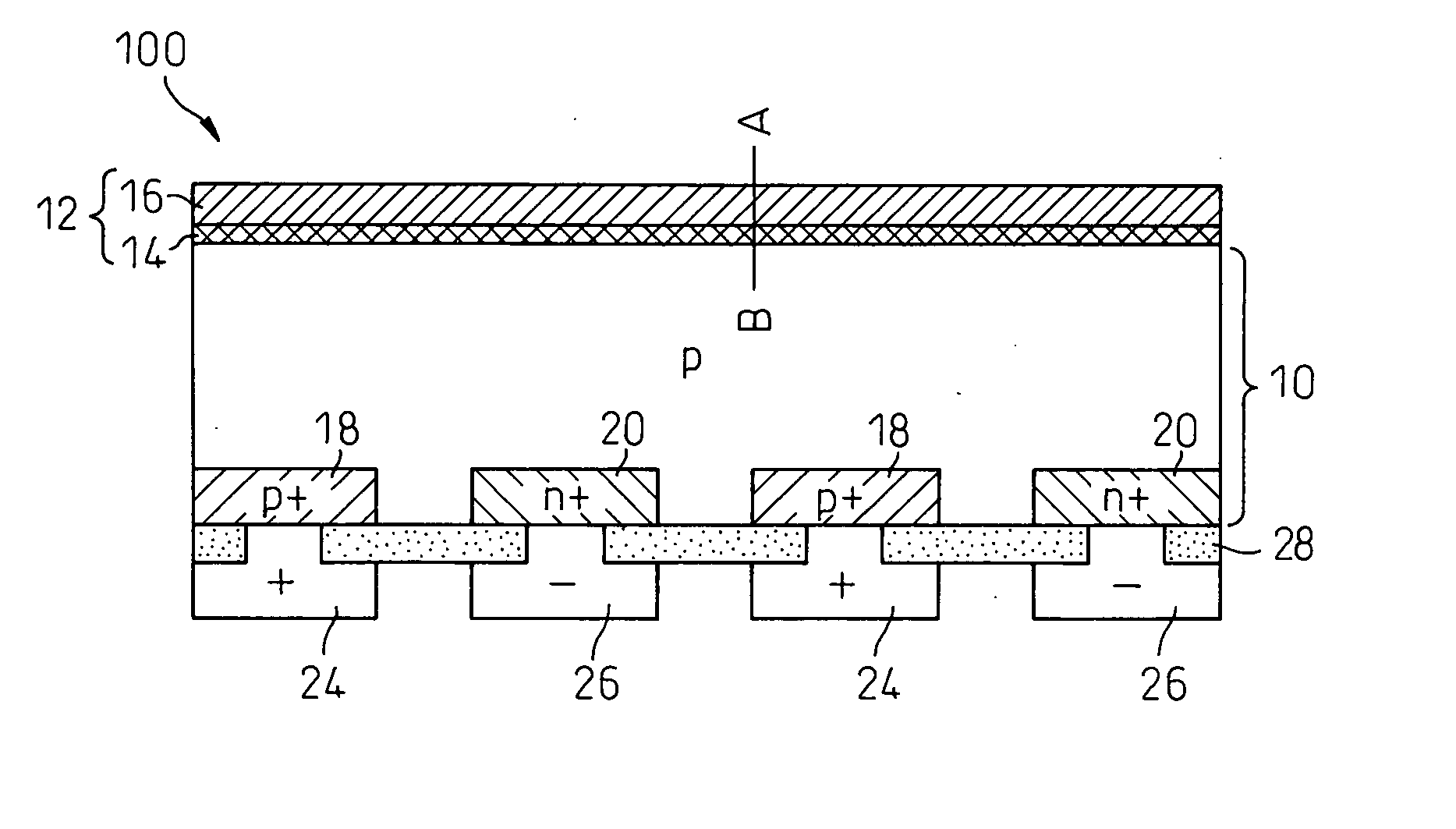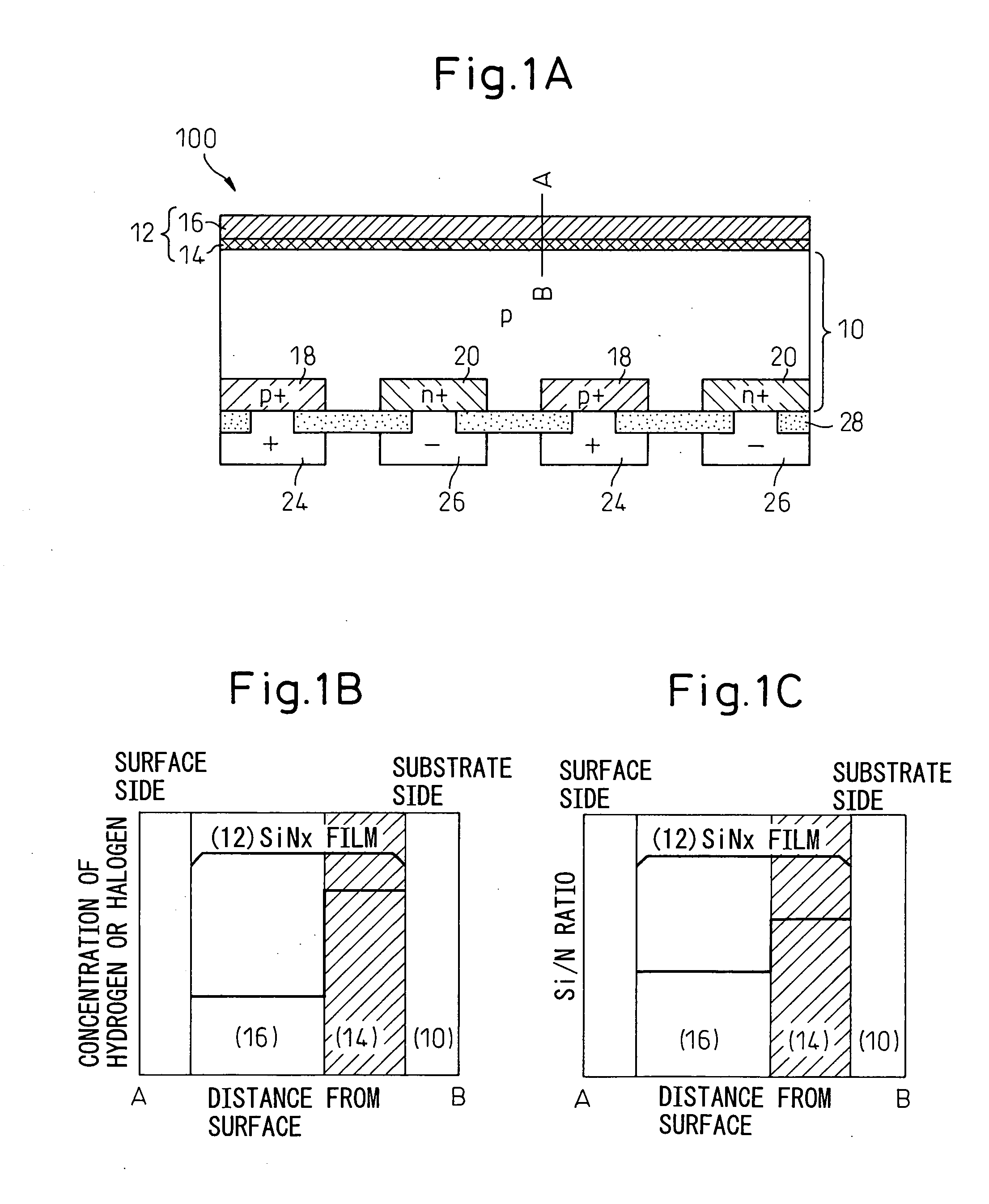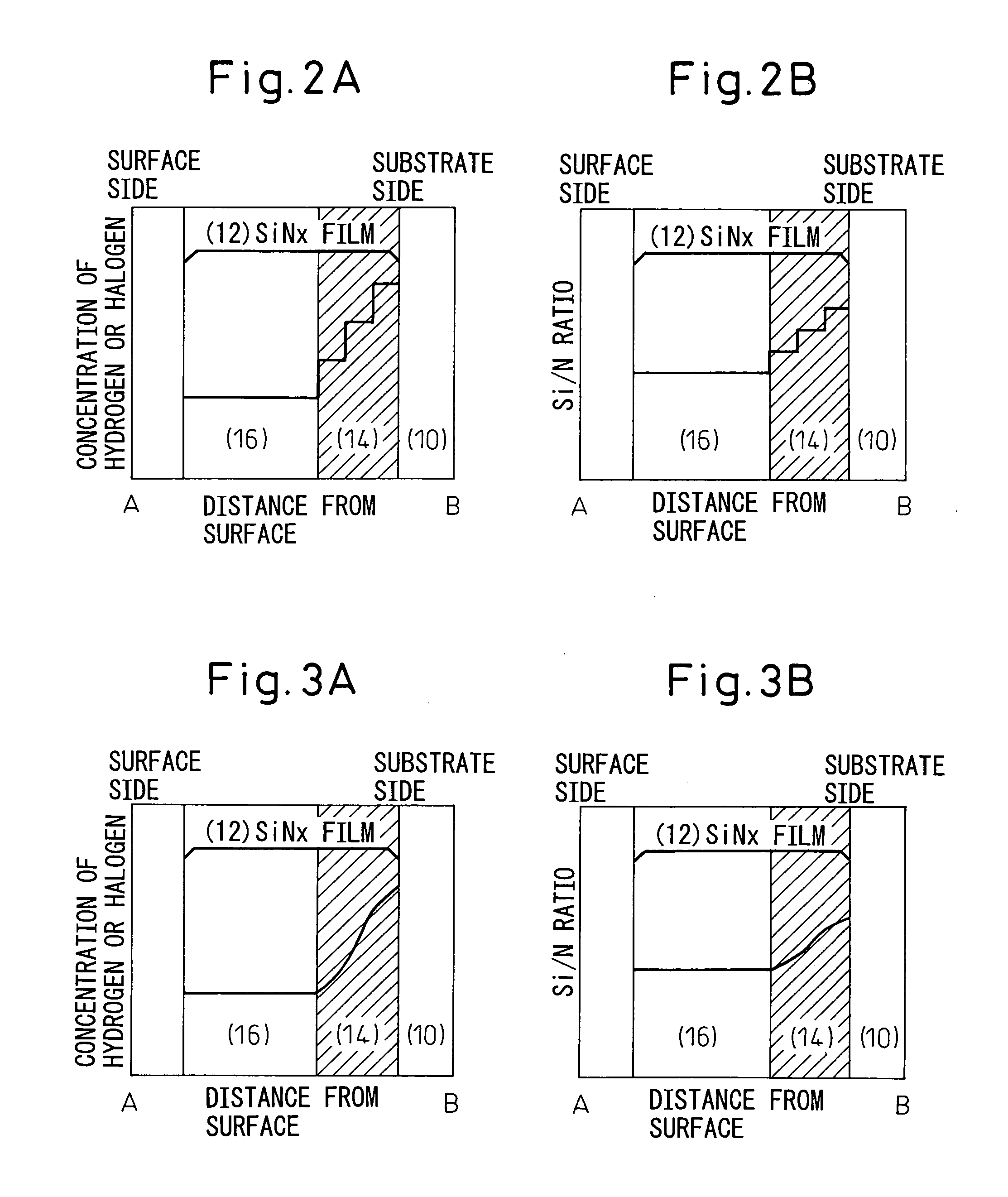Photovoltaic converter
a photovoltaic converter and converter technology, applied in the field of photovoltaic converters, can solve the problems of new defects, increased carrier recombination loss, and power generation efficiency drop, and achieve the effect of reducing reflection loss and increasing power generation ra
- Summary
- Abstract
- Description
- Claims
- Application Information
AI Technical Summary
Benefits of technology
Problems solved by technology
Method used
Image
Examples
example 1
[0065]FIGS. 1A to 1C show an example of a photovoltaic converter according to the first embodiment of the first aspect of the invention. FIG. 1A is a cross-sectional view of the photovoltaic converter, FIG. 1B shows the profile of concentration of hydrogen or a halogen along line A-B of the same, and FIG. 1C shows the profile of the Si concentration / N concentration ratio.
[0066] As shown in FIG. 1A, the photovoltaic converter 100 of the present invention is formed on a p-type semiconductor substrate 10 and is provided on its light receiving surface (top surface in figure) with a protective film / antireflection film 12 made of silicon nitride. The back surface side end (bottom end in the figure) of the semiconductor substrate 10 is formed with a p+ layer 18 and n+ layer 20 as carrier diffusion layers by diffusion. These are connected to the positive and negative outside output electrodes 24 and 26. The back surface at other than the connection positions of the carrier polarization lay...
example 2
[0095] In Example 1, the content of hydrogen or a halogen (means X) and the ratio of the Si content / N content (means Y) were made constant profiles over the entire region of the boundary region 14, but the invention is not particularly limited to this. The means X and the means Y should be combined so that the refractive index inside the boundary region 14 is maintained equal to the other portions 16 (constant over entire boundary region 14). That is, the two means should balanced or combined so that the change in the refractive index due to the means X and the change in the refractive index due to the means Y cancel each other out to give a substantially zero change.
[0096]FIGS. 2A and 2B show preferable examples of profiles. The profiles increase stepwise from the surface side to the substrate 10 side in accordance with the content of hydrogen or a halogen (means X) in FIG. 2A and the ratio of the Si content / N content (means Y) in FIG. 2B. Due to this, the internal stress in the s...
example 3
[0120] In this example, as shown in FIGS. 3A and 3B, the content of the hydrogen or a halogen (means X) (FIG. 3A) and the ratio of the Si content / N content (means Y) (FIG. 3B) are continuously increased from the surface side (A side) to the substrate side (B side) in profile.
[0121] By adopting this continuous increase profile, the effect of change due to the step-wise increase profile of Example 2 is further enhanced. That is, the internal stress of the silicon nitride film 12 is further reduced so that (a) the effect of prevention of peeling of the silicon nitride film 12 due to the heat treatment in the device fabrication process is further enhanced and simultaneously (b) the effect of reduction of defects at the surface of the substrate 10 contiguous with the silicon nitride film 12 is further enhanced.
[0122] As a result, (a) the improvement in the production yield due to the prevention of peeling of the silicon nitride film 12 and the reduction in the production costs due to t...
PUM
 Login to View More
Login to View More Abstract
Description
Claims
Application Information
 Login to View More
Login to View More - R&D
- Intellectual Property
- Life Sciences
- Materials
- Tech Scout
- Unparalleled Data Quality
- Higher Quality Content
- 60% Fewer Hallucinations
Browse by: Latest US Patents, China's latest patents, Technical Efficacy Thesaurus, Application Domain, Technology Topic, Popular Technical Reports.
© 2025 PatSnap. All rights reserved.Legal|Privacy policy|Modern Slavery Act Transparency Statement|Sitemap|About US| Contact US: help@patsnap.com



